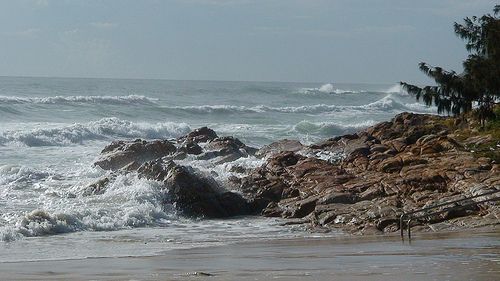
Tidal Energy
 Image by Horizon2035
Image by Horizon2035
It seems like almost every day a new type of renewable energy resource is popping up. Especially in the wake of an incident such as the recent Gulf Oil Spill, renewable energies like wind, solar and even tidal power are gaining more and more interest.
Now each renewable energy, in its own right, is probably worth researching and tapping into, but let’s take a look at tidal energy for a moment. Tides are the regular rising and falling of surface water levels in oceans, gulfs, bays, harbors, etc. Tides are actually the result of the gravitational pull of the sun and moon on the Earth as it rotates.
Here’s a video that gives a simple explanation of how tides are caused:
Although it isn’t a “new” energy, one of the main reasons tidal power is being looked at as an effective renewable energy resource is that tides never stop…the water is continuously moving back and forth, thus allowing energy to be generated in a constant and predictable manner.
Currently there are very few locations around the world where tidal power is being generated. The Rance Tidal Power Station was the world’s first tidal power station and in 2006, they celebrated 40 years of actively turning tides into energy. As of right now, they are also the world’s largest.
Nova Scotia Power’s Annapolis Tidal Generating Station is the only North American tidal generating station. It is situated on the Annapolis River where it can take advantage of the highest tides in the world found at the Bay of Fundy.
It is said that, “The force created by these mighty waters is equal to 8000 locomotives or 25 million horses..“. That’s quite a bit of potential tidal power. Check out the power of these tides near the Annapolis Tidal Power Station:
The Jiangxia Tidal Power Station in China is listed as the world’s third largest tidal power station, however South Korea is currently in various stages of construction on numerous tidal power stations that will each generate more than double the energy capacity of any existing tidal power station.
 A relatively new form of technology in the tidal energy field is the Open-Centre Turbine from OpenHyrdo. The Open-Centre Turbines are one of the world’s first underwater turbines that are designed to rest on the sea floor.
A relatively new form of technology in the tidal energy field is the Open-Centre Turbine from OpenHyrdo. The Open-Centre Turbines are one of the world’s first underwater turbines that are designed to rest on the sea floor.
They don’t require a large dam to support them and they are designed to minimize environment impact. One of their first deployments of the Open-Centre Turbine was in the Bay of Fundy for Nova Scotia Power. You can take a look at these videos to see the turbine en-route to its new home and it being put in place.
It has been reported however that this test turbine is no longer responding to remote sensors and additional test turbines have been delayed until 2011. Despite this fact, Nova Scotia Power still hopes to have an entire tide farm in order to capture the power from the tides in the Bay of Fundy. Maine is also currently researching and looking at tapping into tidal power in the Gulf of Maine.
As far as OpenHydro, they currently have projects in Nova Scotia and Alderney (in the Channel Islands). They were also the first company to install a tidal turbine at the EMEC facility in the Orkney Islands, Scotland, so I look forward to seeing what comes next for them.
When it comes to tidal energy, there is no shortage of resources. As long as the Earth keeps spinning and there is water in the oceans, we will have tides. The question then becomes, can we tap into this resource with minimal environment disruption? What do you think? Is tidal energy a strong renewable resource?


Stephanie
So much naturally occurring energy out there! I love the idea of tidal energy. This is a great overview!